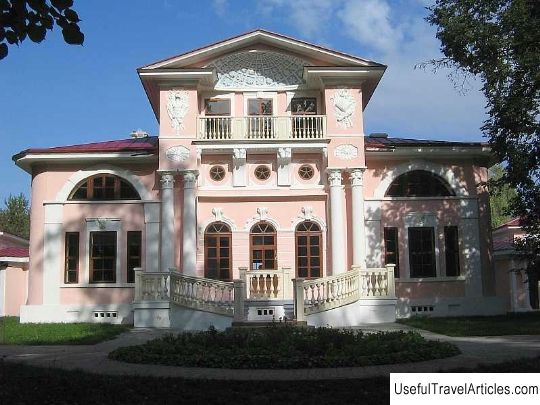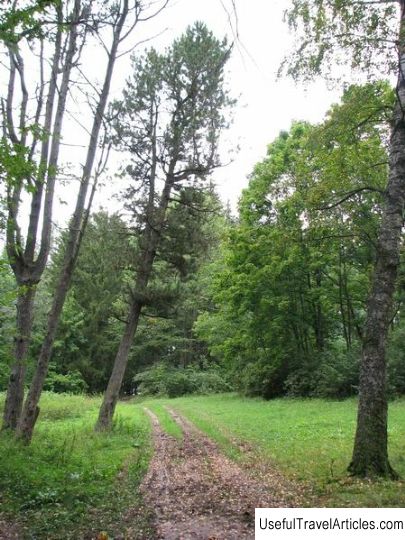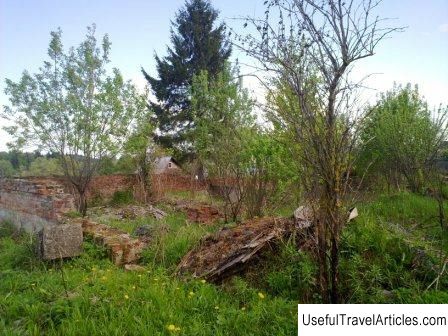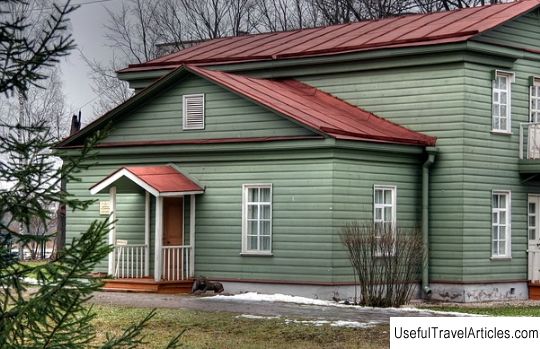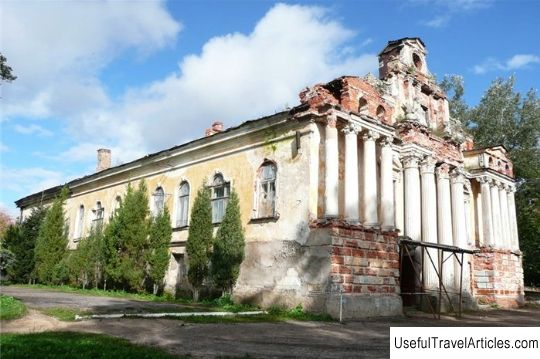Bryanchaninovs' estate description and photos - Russia - North-West: Pskov region
Rating: 8,3/10 (669 votes) 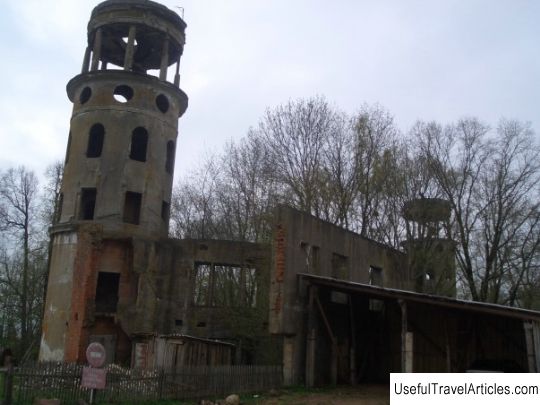
Bryanchaninovs estate description and photos - Russia - North-West: Pskov region. Detailed information about the attraction. Description, photos and a map showing the nearest significant objects. Photo and descriptionThe Brianchaninovs' estate got its name in the first half of the 20th century, and until that moment the estate had a rather common name - Gora, or it was also called after one neighboring village - Novo-Troitskoye. Initially, this estate was under the jurisdiction of a certain Alekseev, who received these lands while staying in the Velikie Luki district - this event took place under the great Tsar Aleksey Mikhailovich. Approximately in the middle of the 19th century, according to the will of Maria Ivanovna Alekseeva, the estate went to one of her distant relatives, Nikolai Semenovich Bryanchaninov, who became a representative of actually the most ancient of the noble families. The landowner Bryanchaninov played a decisive role in the life and development of Pskov province, After all, this person was more than once elected the chief leader of the district nobility, as well as the vice-governor, while actively taking part in charitable affairs, which can be confirmed by the entries in the Pskov Province Memorial Book. Alexey Mikhailovich was also privy councilor, equestrian of the Imperial Majesty's court and senator. In 1885, Bryanchaninov retired and was closely engaged in the development of his estate. As a result of his hard work, the estate literally blossomed and acquired a magnificent view, which can be seen in photographs taken by the famous photographer V.I. Kozlov. A palace was built parallel to the road that leads from the churchyard to Lokno. Throughout 1909, the son of Nikolai Semenovich Bryanchaninov, Alexander Nikolayevich, decided to attach two towers built of reinforced concrete to the main house. These two towers rise about 35 meters above the ground. The tower building was unusually complemented by a colonnade. In addition, Alexander Nikolaevich has completely landscaped his palace: he has installed the sewerage system and water supply. In Russia at that time, the so-called style of historicism was especially widespread, which is why the Bryanchaninov palace had a large number of rooms that were decorated according to the tastes of that time. In this case, the Greek and Russian styles, as well as the Byzantine and Egyptian styles, were used, while glass-bead and mirror rooms, a spacious exhibition hall and a rich library, an art gallery and a small house church were relevant. The Brnjachaninov Palace was located in the central part of a luxurious park, which occupied an area equal to 35 hectares of territory. The manor house was surrounded by three ponds, creating the illusion of its so-called island location. The ponds were connected with the help of streams and streams, through which small bridges with forged openwork gratings were thrown. On the pond, located in the northern part of the estate, there was a small bathing department, as well as its own boat station. Next to the palace there was a vast glass greenhouse, in which grew quite rare and surprisingly beautiful flowers, the seeds of which were brought from Europe. There was also a fruit and berry garden at the estate. During the First World War, Alexander Nikolaevich Bryanchaninov spent most of his time in the Russian capital, working on the publishing house of a magazine called "New Link", which published articles by V. I. Bekhterev, A. A. Shakhmatov, as well as Semenov-Tian. Shanskiy N.P. After the February revolution passed, Alexander Nikolayevich financed the magazine "Pskov Life" in cooperation with V. Filosofov, N. Kartashov. While in Pskov, he and his colleagues lived in a large manor house ... During his stay in Pskov, the estate in Starye Lipy fell into significant desolation, which can be said, judging by the inventory of 1922. At that time, there was practically no furniture left in the estate, because all of it was transported to Moscow; in Moscow there were also a valuable library, as well as valuable paintings. Everything around the church fell into complete desolation, so in 1924 the commission decided that it was possible to use only part of the house as living quarters, and completely disassemble the house church and gallery. At the moment, in the surviving buildings the manor houses a female boarding school.         We also recommend reading Museum-panorama ”Battle of Borodino” description and photos - Russia - Moscow: Moscow Topic: Bryanchaninovs' estate description and photos - Russia - North-West: Pskov region. |
